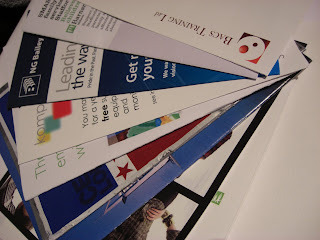1. What skills have you developed through this module and how effectively do you think you have applied them?
Firstly learning about all the printing processes available in print was useful and in doing so this allows me to take it in to consideration what methods of print to use with my work. As I hadn't really heard of print processes such as Rotogravure before and it was good to know how this method works. Also, Letter Press which was very useful as I have always wanted to learn about the press and what could be produced from such a process. I would have liked to use this method of printing with this project but I feel that it didn't really fit with what I was producing.
I also feel that I have more of an awareness for colour methods and what to take in to consideration when designing something on screen and then taking it in to print. Also it was useful to find out how much printing costs are and summing up how much it would cost to print such a product, which proved to be quite costly in some cases.
2. What approaches to generating work and solutions to problems have you developed and how have they helped?
I found that creating thumbnails for my layouts helped within the decision making on my final presentation boards. Producing small scale thumbnails for my products also provided the in this decision making also.
3. What strengths can you identify in your work and how have/will you capitalize on these?
I have looked in to the different print processes that were available for my product. Therefore allowing me to have some idea of how my designs would be produced commercially and the cost values as well. I also feel that through the use of thumbnail layout sheets i have been able to explore the design values of my product.
4. What weaknesses can you identify in your work and how could you exploit these more fully?
Firstly I feel that some of my designs could have been explored a little further and I could have experimented more with the 'food photography' side of my project(as the photography side of things didn't really work out that well) More research in to the methods of promotion in the food industry.
5. Identify five things that you will do different next time and what do you expect to gain from doing these?
- get access to screen print earlier. Therefore I have more time to print as I ran out of time to use this printing method within this project.
- make design decisions sooner. So that my work can move on at a pace.
- experiment more with my designs do that I have a varied range of possible designs.
- be more organized when it comes to printing my presentation boards as I have found out that digital print can be a very time consuming place near to a deadline!!!
- be aware of my message I am trying to deliver and never loose track of this, as my work started to drift a little from not doing so.
6.How would you grade yourself on the following areas:
5= excellent, 4 = very good, 3 = good, 2 = average, 1 = poorAttendance:4
Punctuality:4
Motivation:3
Commitment:3
Quantity of work produce:3
Quality of work produced:3
Contribution to the group:3


 This was my submission to the typo-gateaux competition lots of colour and sugary goodness. I chose the letter 'E' because of all the e-numbers that's probably in the cake...yum...and yes 'E' is for Emma of course.
This was my submission to the typo-gateaux competition lots of colour and sugary goodness. I chose the letter 'E' because of all the e-numbers that's probably in the cake...yum...and yes 'E' is for Emma of course.















































